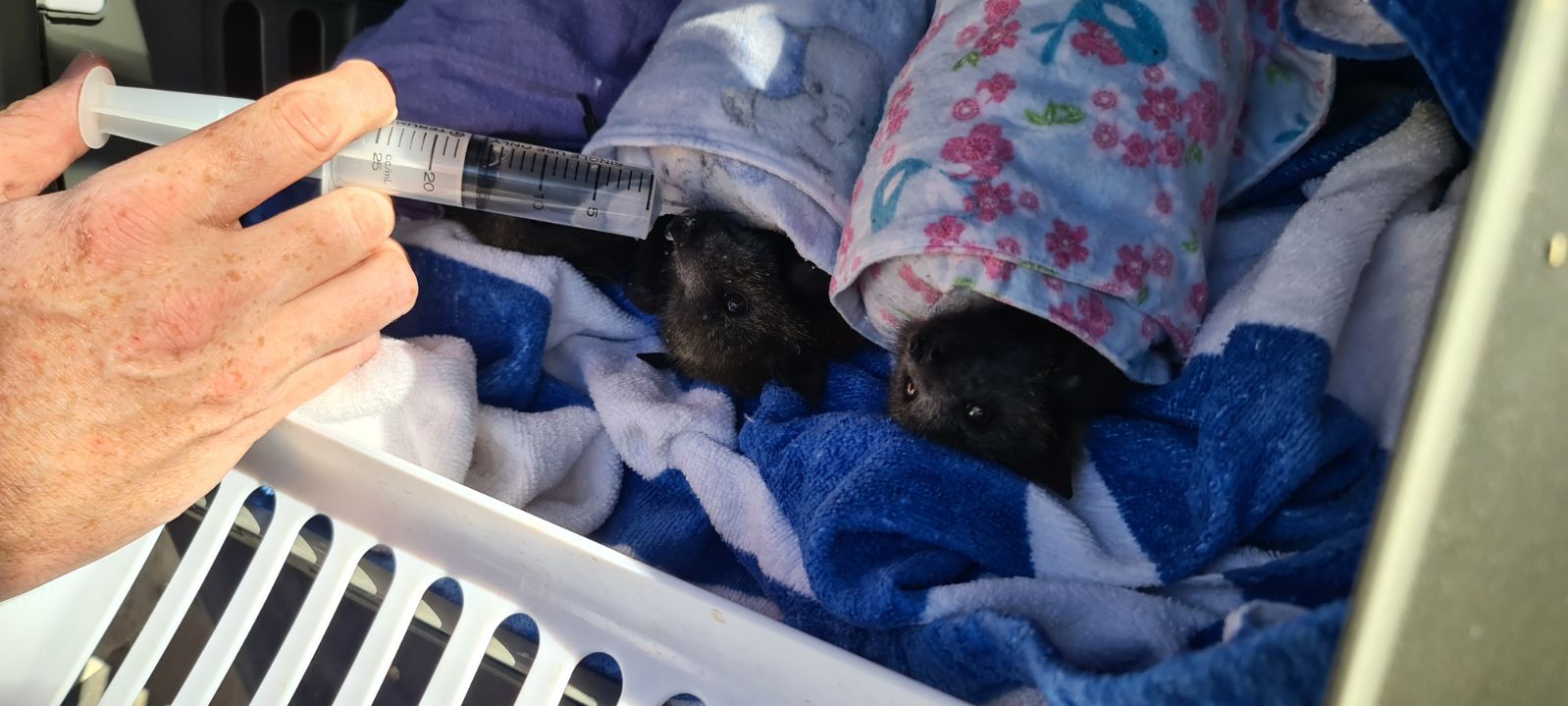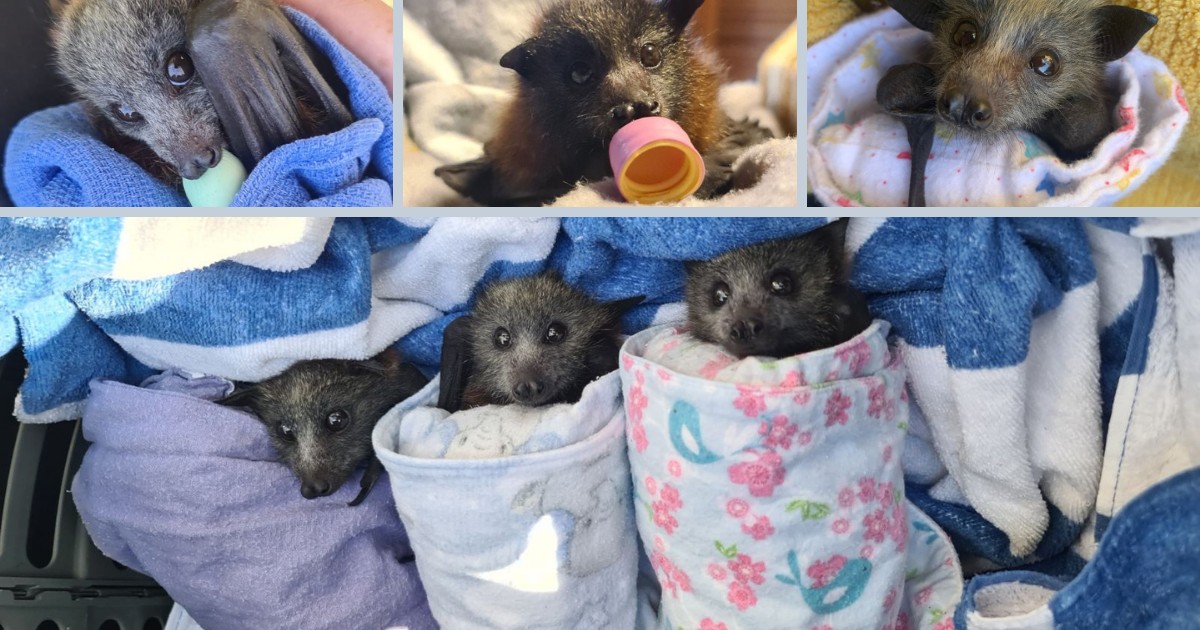
Flying Fox Mass Death Event: WIRES' Efforts to Protect and Preserve
Tuesday, December 19, 2023
Australia's unique biodiversity hinges on the pivotal role played by its four mainland species of flying foxes. These creatures contribute significantly to the preservation of ecosystems by pollinating and regenerating vast areas of bushland. However, the critical situation facing these flying fox populations demands urgent attention.
Starting November 2023, a distressing mass starvation event swept across Queensland, extending rapidly through NSW and Victoria. This crisis struck during a season when female flying foxes were either pregnant or nursing their young, exacerbating the severity of the situation. Dr. Tania Bishop, WIRES' Wildlife Veterinarian, underscores the dual catastrophe of starvation and heat stress:
"We're witnessing two mass death events at once: starvation and heat stress. Severely malnourished lactating mothers are incapable of nursing their young, and the orphans coming into care are severely compromised. On top of that, flying foxes are terribly vulnerable to extreme heat, especially nursing mums. If they can't cool down and consecutive days soar above 40 degrees, they suffer from heat stroke, and their internal organs start to fail."
The repercussions of these events have led to mass fatalities among flying foxes across eastern states and an overwhelming influx of malnourished and heat-affected individuals requiring immediate care. Orphaned pups, in particular, demand intensive, specialised attention, adding immense pressure on wildlife carers already stretched thin.

WIRES' Response to the Crisis
WIRES has mobilised crucial efforts to address this unfolding catastrophe:
1. Providing Disaster Relief
WIRES, in partnership with Woolworths, has allocated $20,000 to support flying fox carers in Victoria, NSW, and QLD. This funding aids in securing essential supplies, fresh fruit for rehabilitating adults, and specialised high-protein formulas crucial for malnourished pups in care.
Kristie Newton, WIRES' Program Manager, emphasises the significance of this support:
"Supporting these onerous costs enables more trained carers to lend a hand, which is crucial when existing carers are at capacity and facing financial constraints."
2. Equipping for Rehabilitation and Release
Specialist flying fox carers have been provided with supplementary formulas, equipment, temporary enclosures, and bat creches. Collaboration with councils and local partners aims to establish large-scale pre-release enclosures, which are essential for the rehabilitation and preparation for the release of orphaned flying foxes.
3. Strengthening Support Systems
All flying fox carers must be up to date with their vaccinations and specially trained. In this sense, it has been essential not only to reach out to all WIRES flying fox carers to check they're up to date with their training and vaccinations (WIRES provides vaccinations to our carers and has provided free vaccinations to vets through our grants program) but to make sure we have a coordinated approach so all specialist carers can be quickly alerted when necessary.
WIRES are working with our emergency system, Everbridge, and rescue communication platform, xMatters, to create weather forecasting alerts near at-risk flying fox colonies. This means we can take preventative action when a heat event is forecast and deploy our field staff quickly when temperatures spike.
Wildlife Ambulances, Emergency Response Teams and vaccinated carers can also be deployed to help with rescue efforts and to translocate rescued flying foxes amongst available trained carers.
To extend this reach beyond WIRES teams, we've also provided access to specialist training and triage for carers in Queensland, and in the next few weeks, we will release Heat Stress Training Courses for wildlife carers and organisations across Australia.
4. Funding Prevention and Habitat Protection
Alongside advocating to protect threatened flying fox populations and regenerating their habitats, some mitigation techniques can help protect at-risk colonies, though, as Dr Bishop points out, this is a complex area.
"It's not a case of just spraying camps or using sprinkler systems. Sometimes, depending on whether the camp has a canopy of trees, you can trap humidity, impacting a heat-stressed bats' ability to cool themselves. Every camp and every population is unique and requires their own specialist intervention. This is why the heat response training is so critical."
WIRES has provided this specialist training for our carers, and we're working with councils to support localised cooling interventions. We're also funding research into safeguarding flying fox populations in NSW and South Australia.
The most effective strategy of all, of course, is to regenerate and protect flying fox habitats.
To this end, WIRES has invested over $424,000 in a five-year bush regeneration project for grey headed flying-foxes in mid-north NSW which will increase and protect their roosting and foraging habitats. The end game for this project is that flying foxes will have the layered habitat they need to protect themselves from starvation and overheating – exactly as nature intended.
Recent Posts
Celebrating World Earth Day: The History of Environmental Action and Collaboration
Feathers of Change: Native Duck Identification Project
NSW Koala Strategy Under Review Amidst Threat of Extinction
WIRES Teams Up With SES To Save Black Swan
Celebrating National Eucalypt Day
WIRES National Grants Support Heathcote Local to Landscape Project
WIRES and Taronga Team Up To Deliver World-Leading Platypus Facilities
WIRES Research Grant Recipient Aims to Protect Platypus Populations
WIRES Vet Dr. Tania Bishop's Wildlife Journey
Securing Koala Survival: Appin Road Wildlife Crossings Fall Short, Urgent Need for Overpasses
